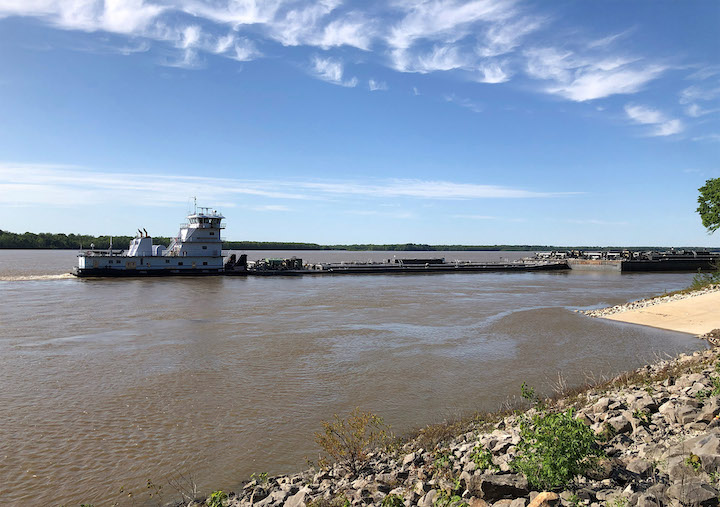A crack in a bridge over the Mississippi River has stranded more than 700 barges, cutting off the biggest route for U.S. agricultural exports when the critical waterway is at its busiest.
The river is shut near Memphis while the Tennessee Department of Transportation inspects a large crack found in a highway bridge spanning the waterway, the U.S. Coast Guard said Thursday. Corn futures tumbled by the most allowed by the Chicago Mercantile Exchange on speculation that exports would be backed up.

A lengthy halt could further roil crop markets, where soybeans and corn futures have hit multiyear highs amid adverse weather in Latin America and a buying spree from China. Corn futures fell by the exchange limit to $6.7475 a bushel in Chicago.
“The river is the jugular for the export market in the Midwest for both corn and beans,” said Colin Hulse, a senior risk management consultant at StoneX in Kansas City. “The length of the blockage is important. If they cannot quickly get movement, then it is a big deal. If it slows or restricts movement for a longer period it can be a big deal as well.”
The New Orleans Port Region moved 47% of waterborne agricultural exports in 2017, according to the U.S. Department of Agriculture. The majority of these exports were bulk grains and bulk grain products, such as corn, soybeans, animal feed and rice. The region also supports a significant amount of edible oil exports, such as soybean and corn oils and even attracted 13% of U.S. waterborne frozen poultry exports in 2017.
Some traders speculated that, based on past experience, the river might be partially opened for restricted movements while repairs are being done.
It may be difficult for exporters to shift much volume to rail, as the capacity to unload trains outside of the New Orleans area is limited, according to Curt Strubhar, vice chairman and risk management consultant at Advance Trading Inc.
“Other than NOLA port elevators, there aren’t many rail unloaders South of the issue,” he said. “NOLA port elevators aren’t equipped to handle a sharply higher share of rail unloads either.”
The crack halting vehicle and waterway traffic is in the truss of the I-40 Hernando DeSoto Bridge, which was found during a routine inspection, according to a Tuesday press release from the Tennessee DOT.
”The timeline is still undetermined” for the waterway reopening, Nichole Lawrence of the Tennessee Department of Transportation said Thursday in an email.
”My sense is that it is not a big deal for river traffic as it will be a short-term disruption,” said Stephen Nicholson, a senior analyst for grains and oilseeds at Rabobank. “The good news is most of fertilizer has already come up river and soybean exports are at their low point. However, corn exports continue at a strong pace, so we may see a slight delay in corn barges reaching NOLA.”








